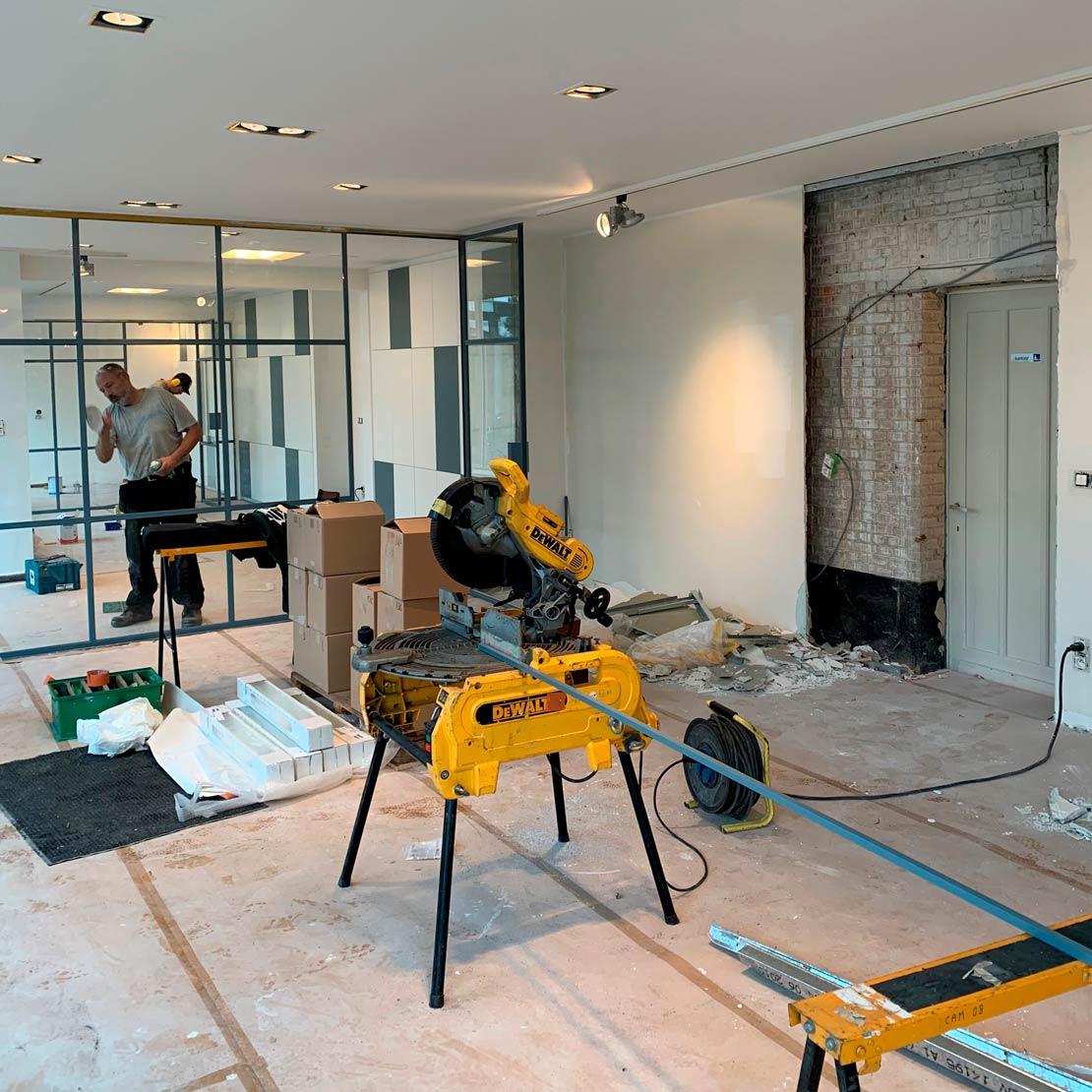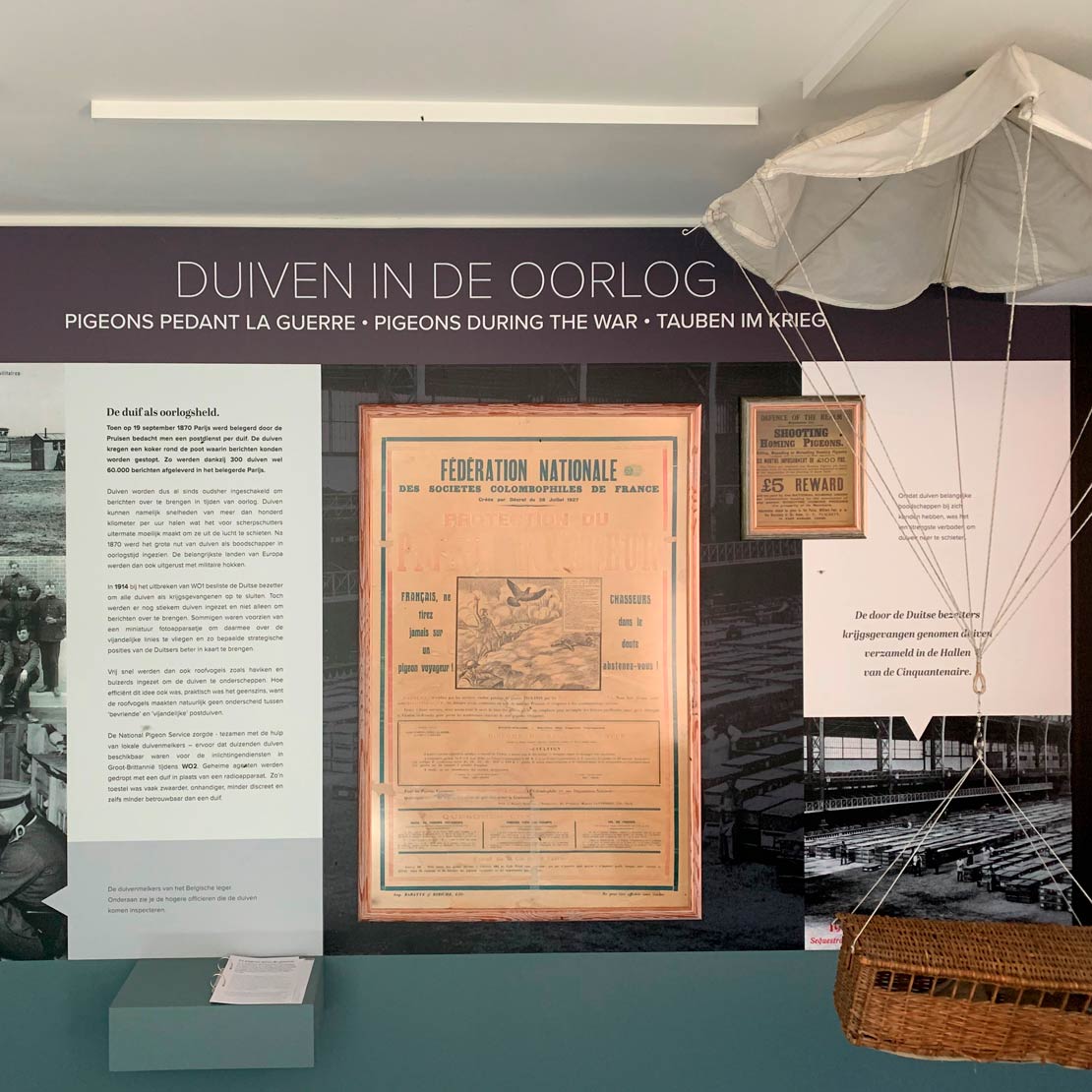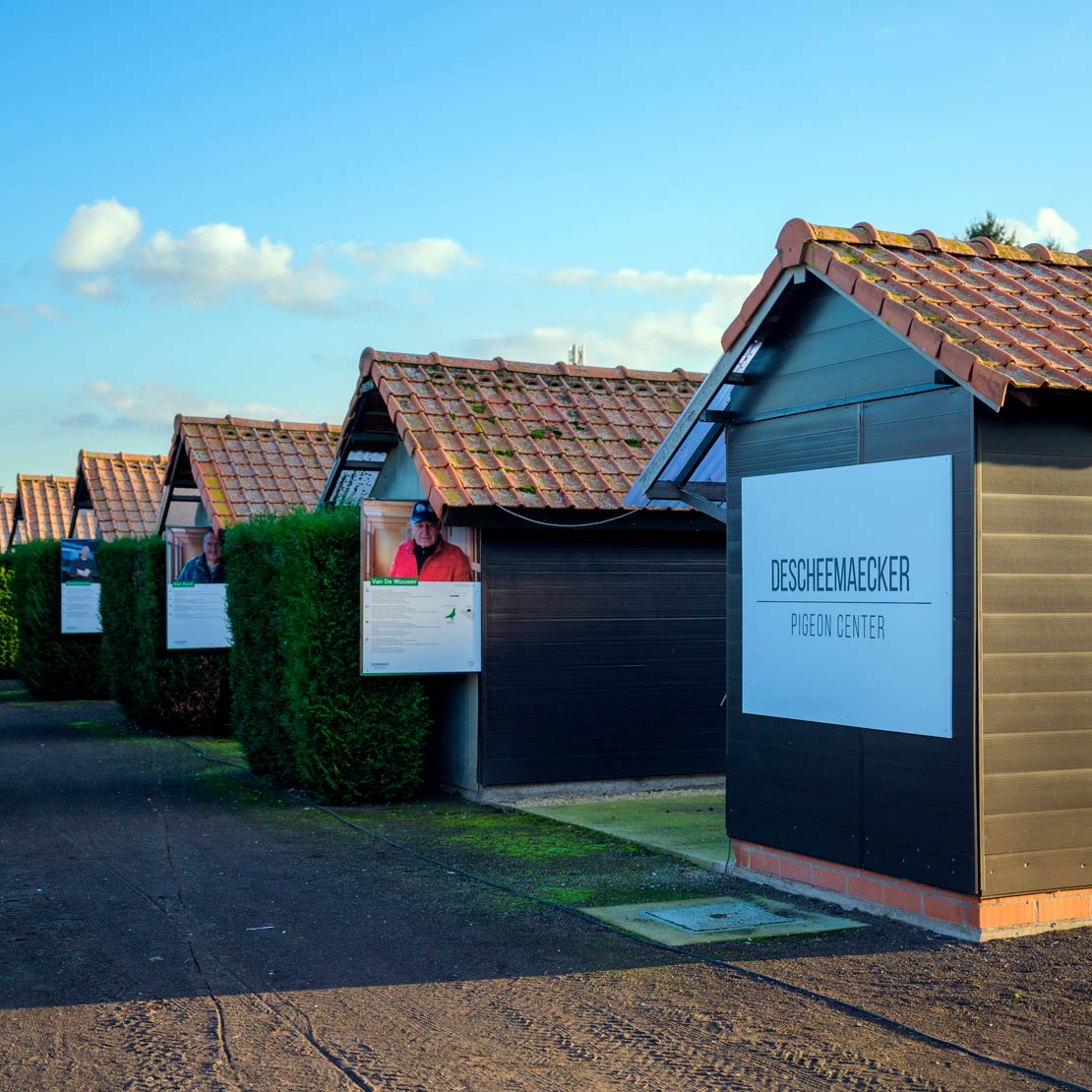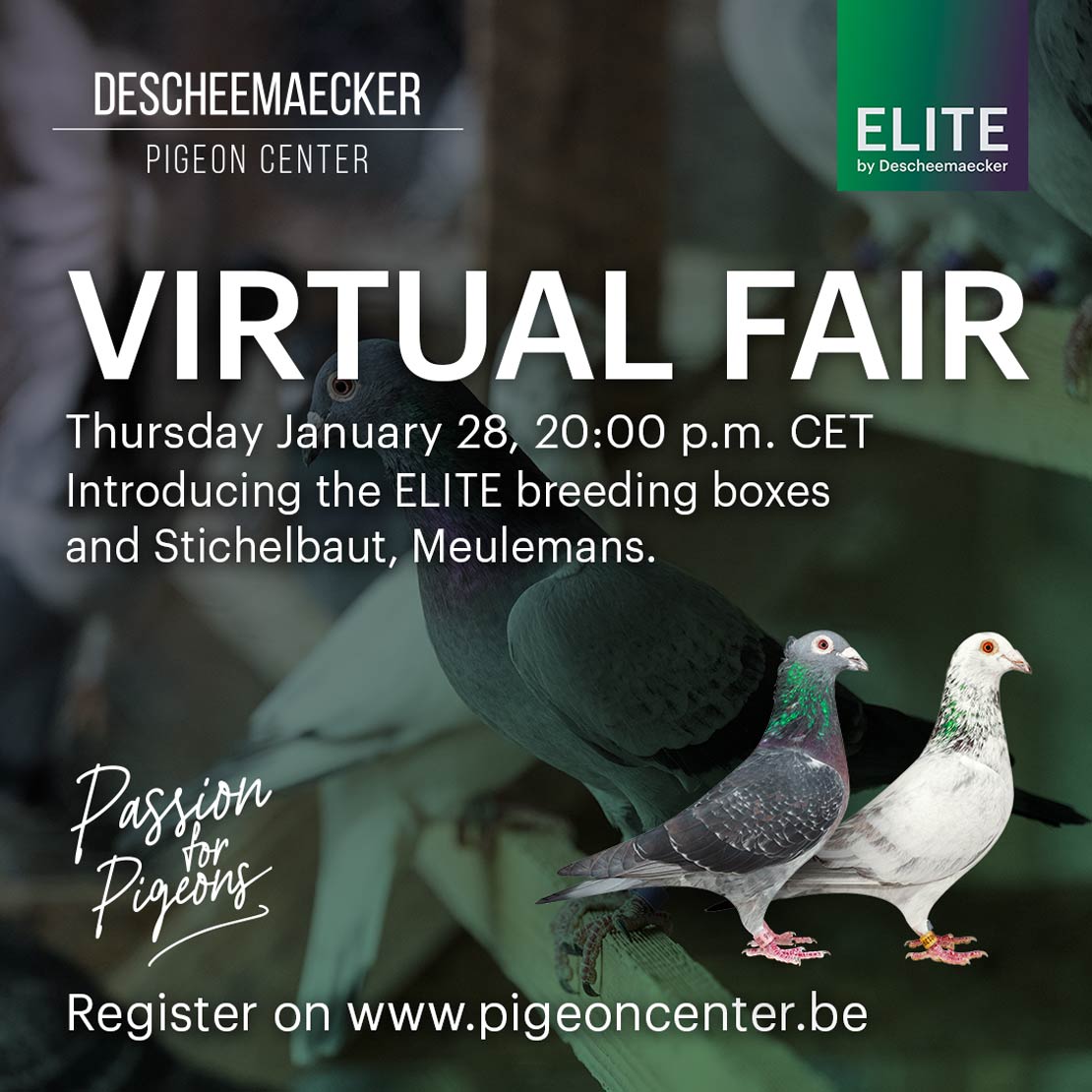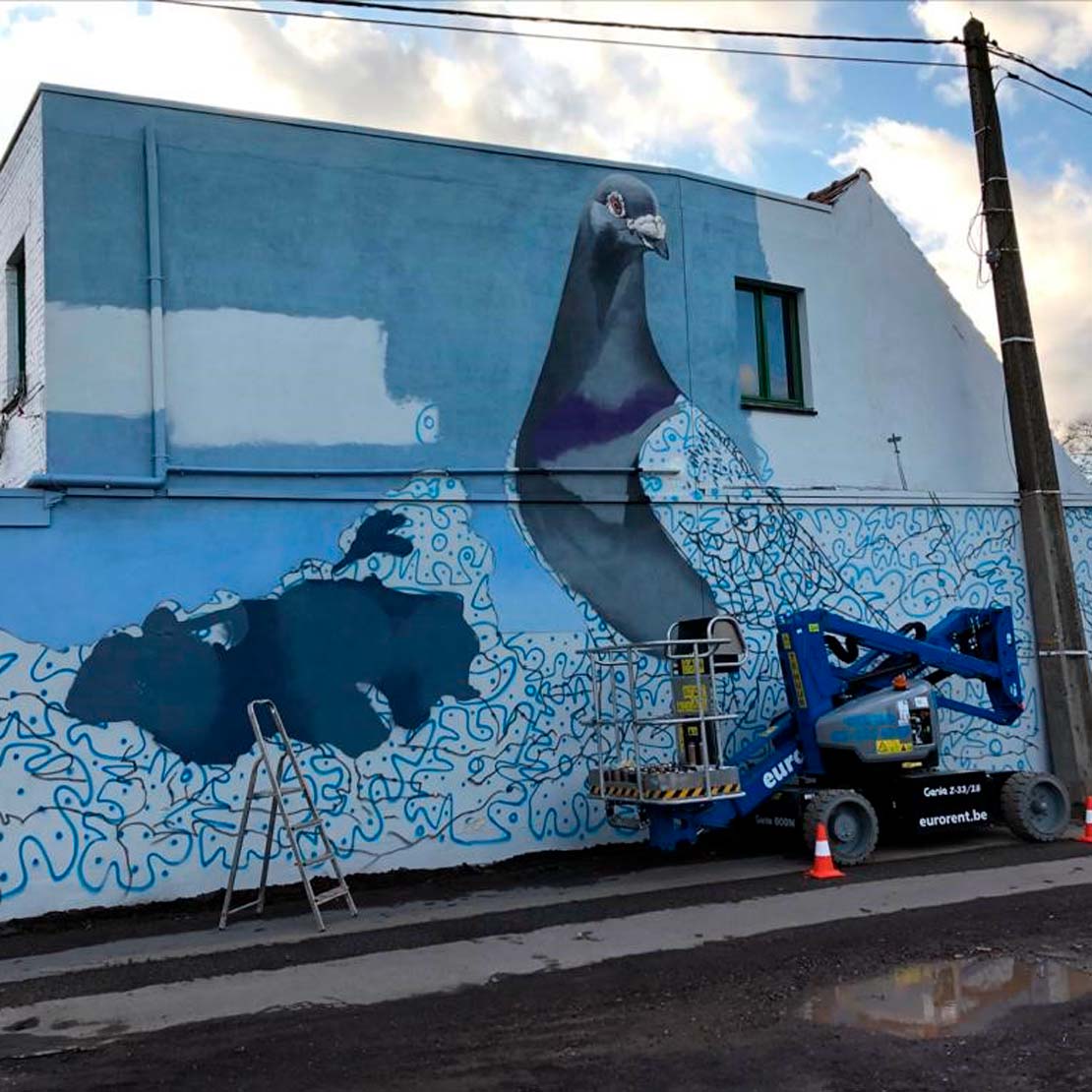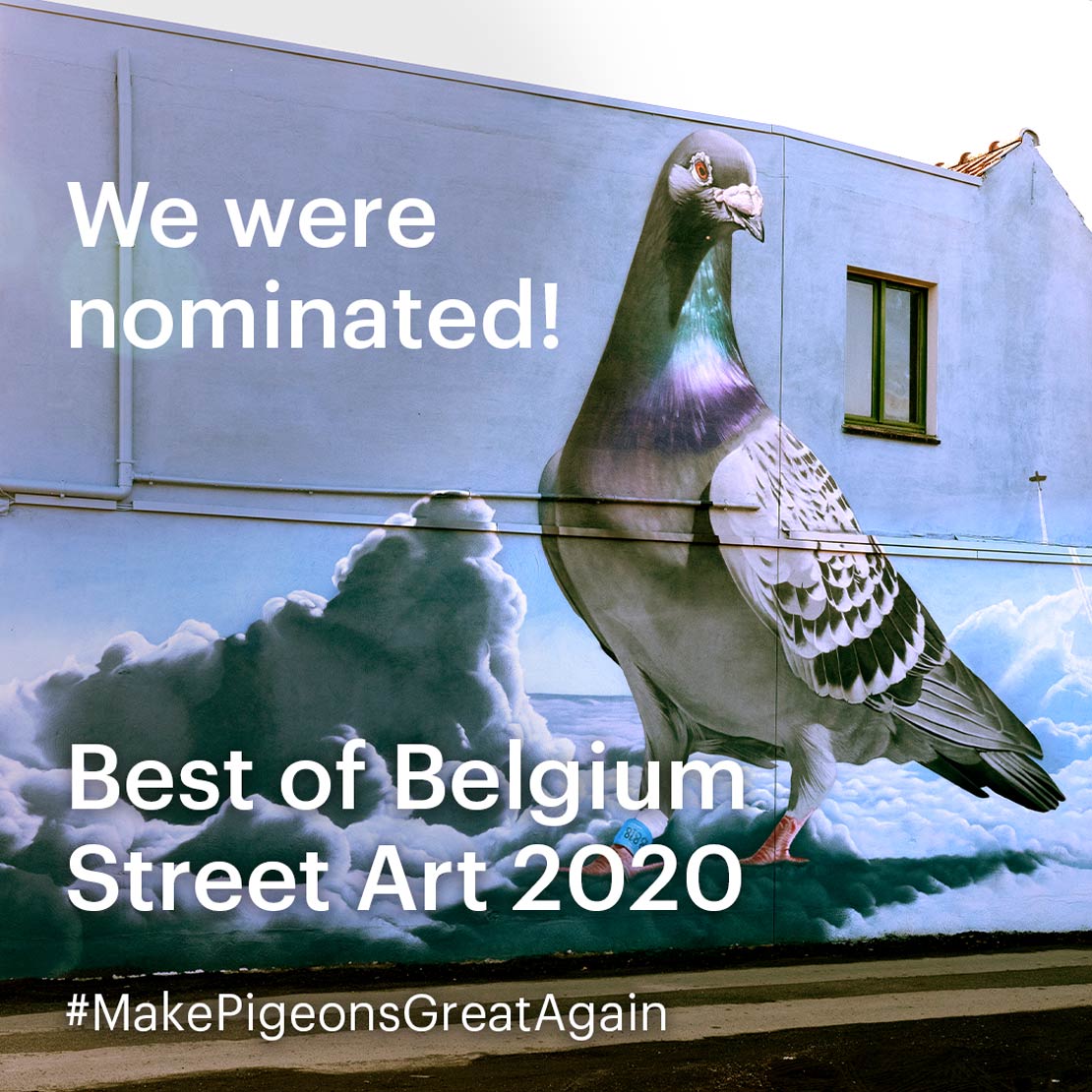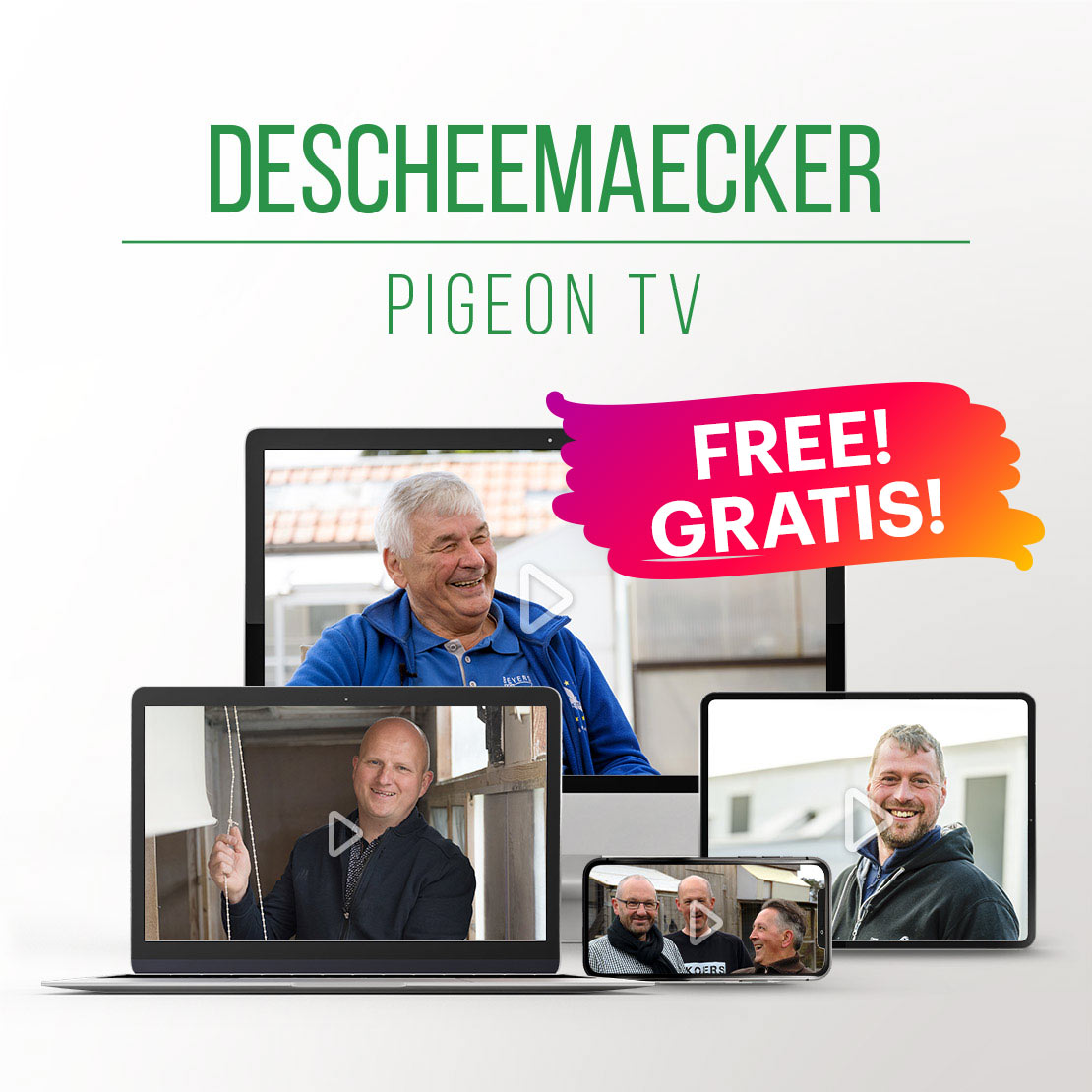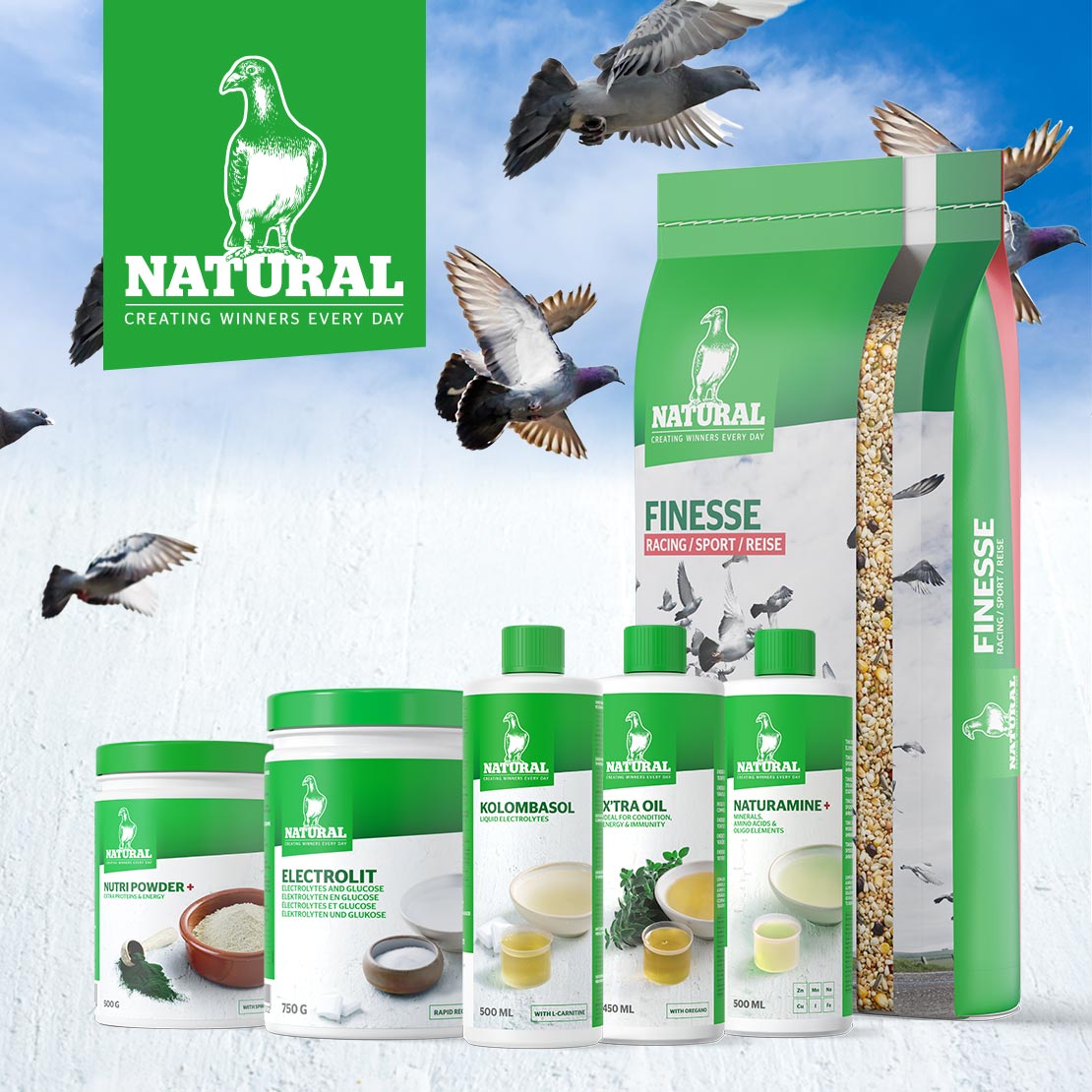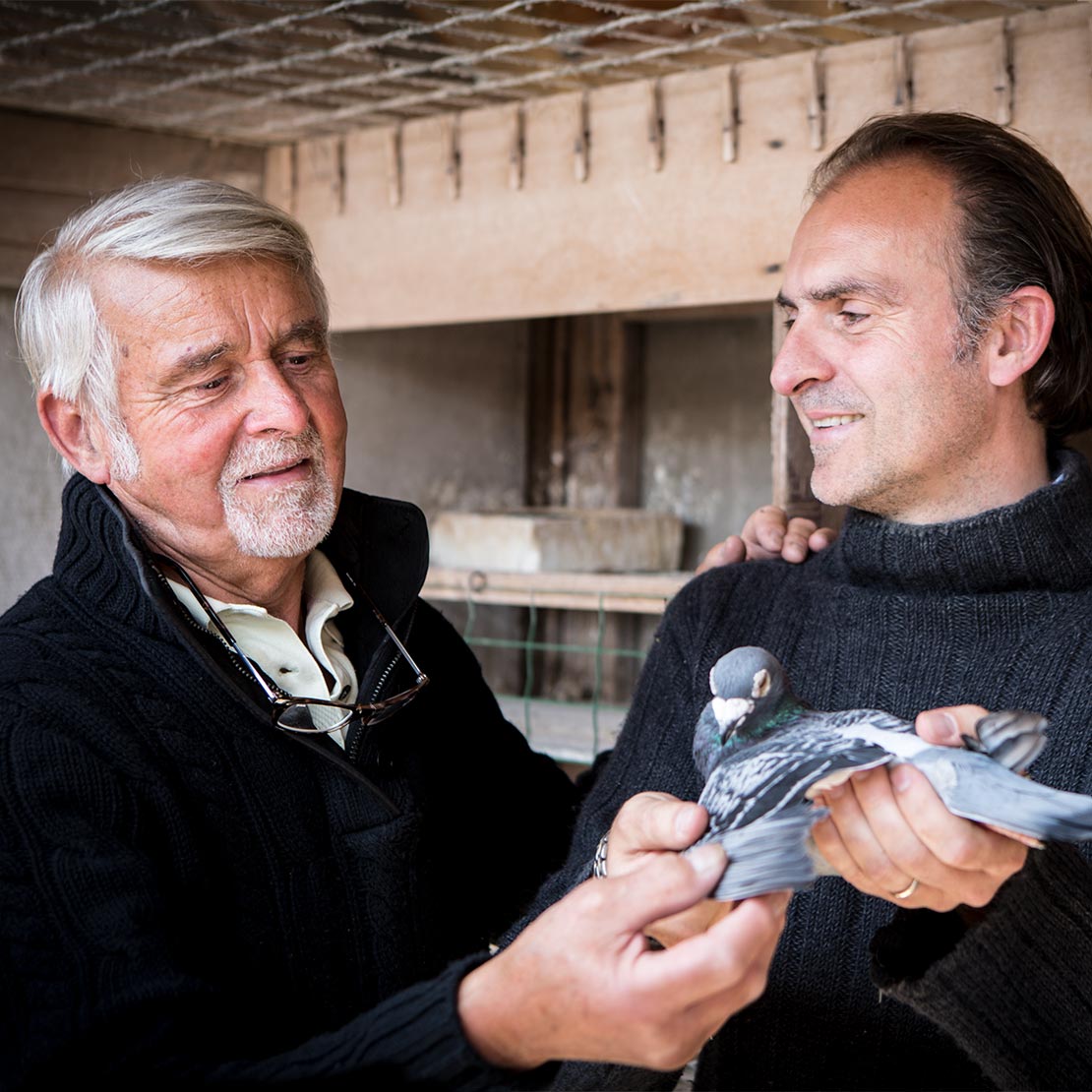A lot of history preceded the establishment of the Descheemaecker Pigeon Center…
For generations, the Descheemaecker family have been entrepreneurs in the pigeon sport. Everything started in 1927 with the brothers Noël and Robert Descheemaecker and almost 100 years later the third generation is still possessed by the pigeon sport in all its different facets. We would like to take you along on a trip to memory lane and tell you the story of the fascinating origins of the Descheemaecker Pigeon Center.
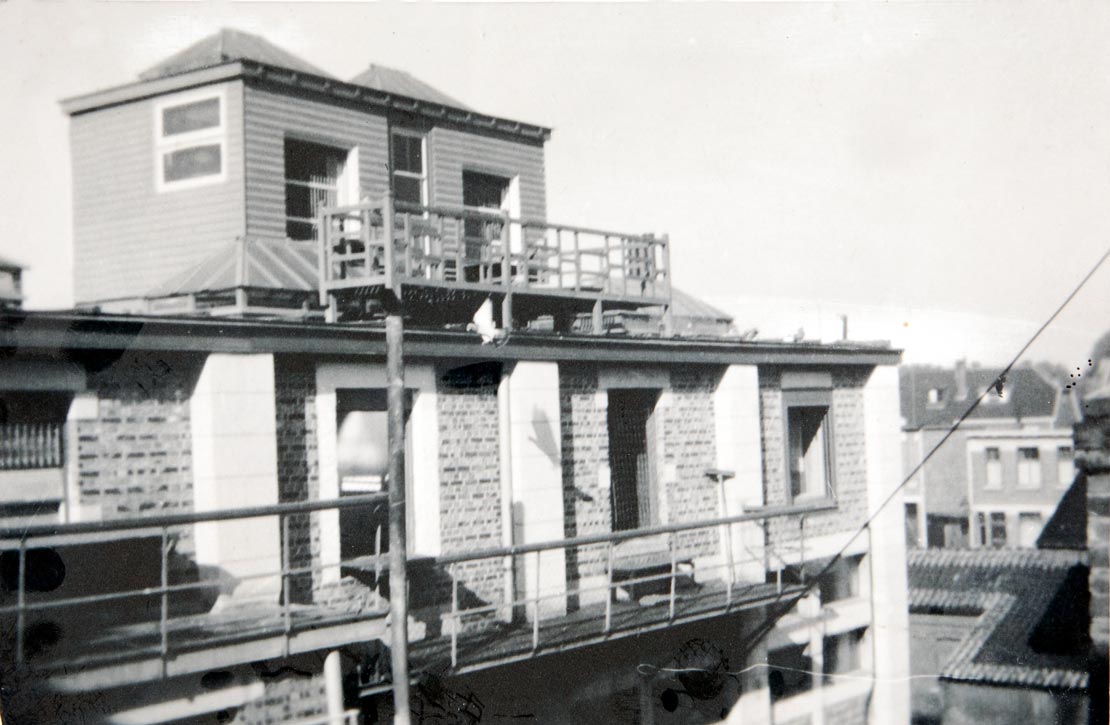
1927
The brothers, Noël and Robert Descheemaecker, both passionate about the pigeon sport, built their first pigeon loft in Wilrijk (Antwerp) on the roof of their father's printing house.
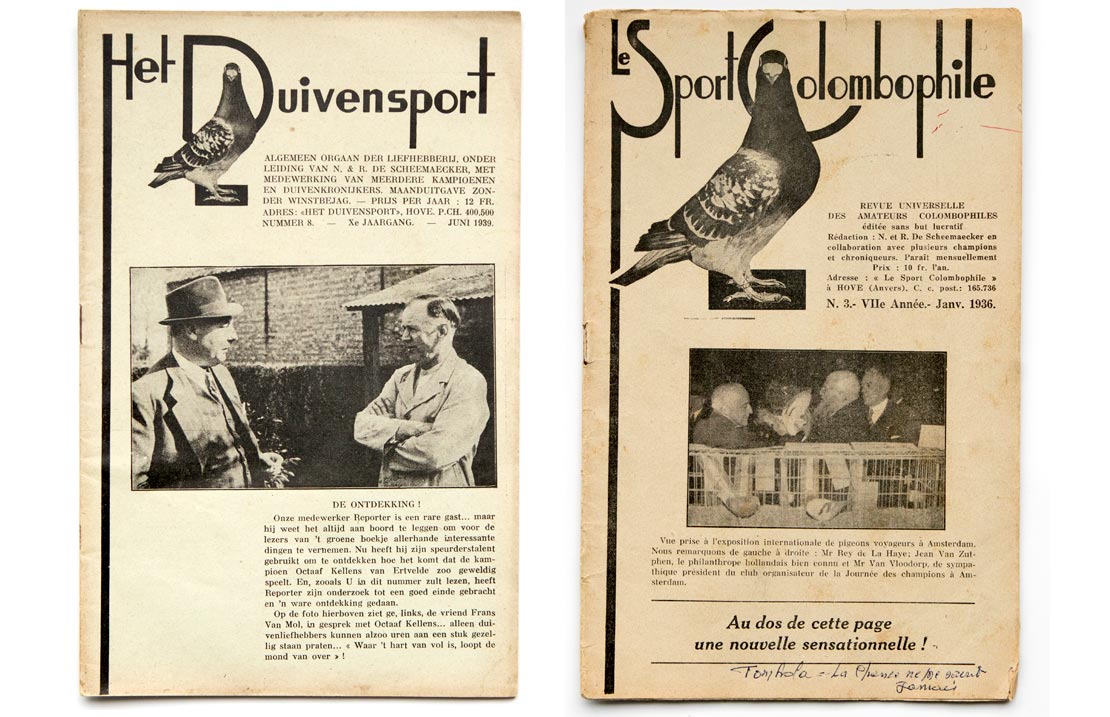
1930
In November 1930 the brothers came up with the idea of publishing a magazine. They baptised it 'Het Duivensport' and it was printed in the printing company of their father. Later on the French version 'Le Sport Colombophile' was also issued.
Initially, only 25 sample copies were printed. They were distributed to their friends and acquaintances to gauge their reactions. It was a simple magazine: there were no advertisements, only articles that were written from personal experience.
The reactions were positive and the content was further extended. Enthusiastic friends from the pigeon racing world, who participated in high-level competitions, also shared their experiences from that moment on. The magazine was an immediate hit: 50,000 copies were printed. The printing company was continuously operating at full speed and was working day and night to print so the magazine could be distributed. The magazine was passed on a lot and had a place in every club room. At its peak it reached an estimated 240,000 readers.
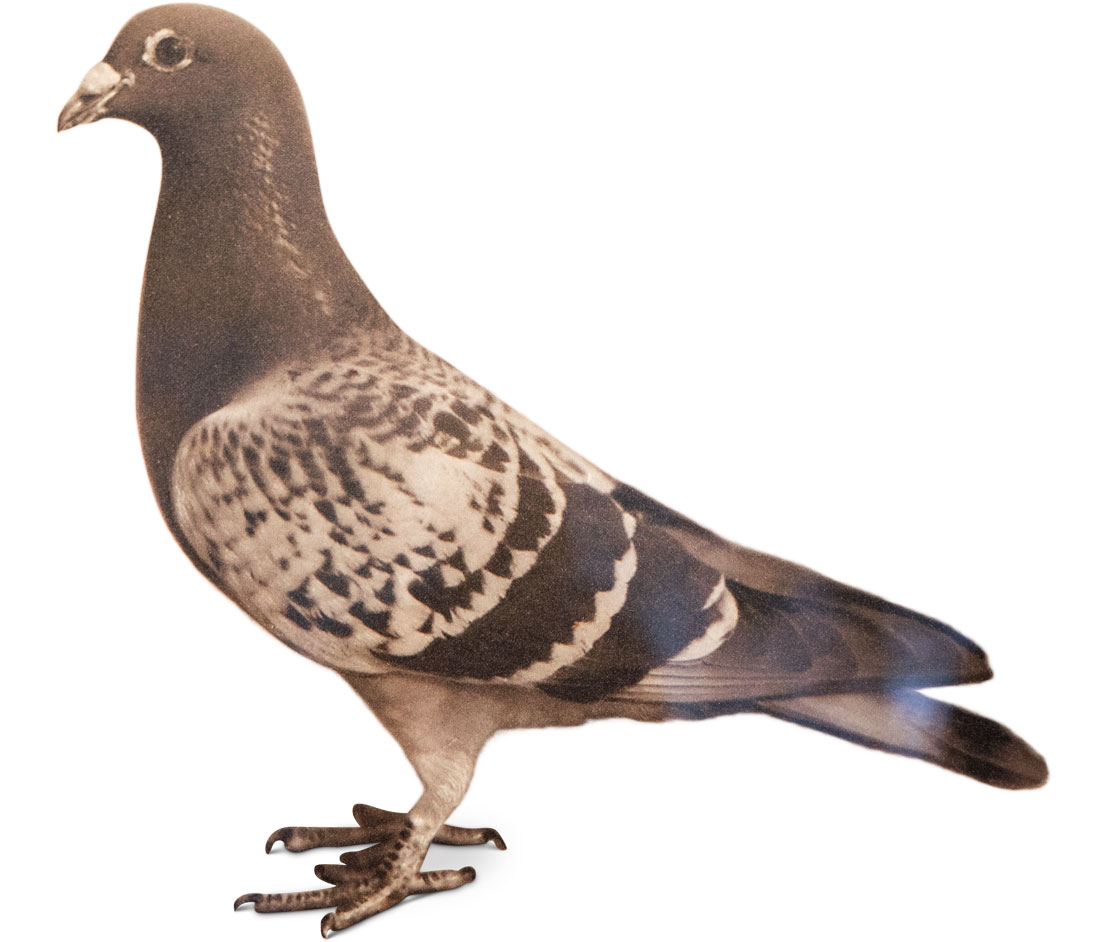
1932
In 1932, the brothers Descheemaecker bought a young cock, 6136542-32, from their friend Evrard Havenith, a well-known Antwerp pigeon fancier. He was given the name 'De Kaers'. For seven years 'De Kaers' was one of the best medium-distance pigeons in the province of Antwerp. He ended his sporting career in 1939 with the first prize of Orléans (400 km) in Union Antwerp, also known as 'the university of Belgian pigeon racing'.
The pigeon was named after the cyclist Karel Kaers, who had a lot of success in the 1930s and in 1934 became world champion track cycling. To this day, we still find traces of Kaers and other famous cyclists of that time at the Descheemaecker Pigeon Center.
In the magazine 'Het Duivensport' Kaers played the leading role in the articles of Noël Descheemaecker. In this magazine he revealed the secret of the impressive performance of his top pigeon: "Wrestle yourself free of the crowd from the start of the race".
During their training sessions the brothers did not let “de Kaers” fly together with other pigeons from the region. Instead, they taught their pigeon to fly alone. If a pigeon is taught to leave the group and if it can choose the right direction, you have a huge advantage. The goal is to teach pigeons to find their own route.
One day, the Descheemaecker brothers, still young men then, were challenged to participate with “de Kaers” in a competition with the highly competitive club “De Zwaluw”. “De Kaers” immediately won first prize.
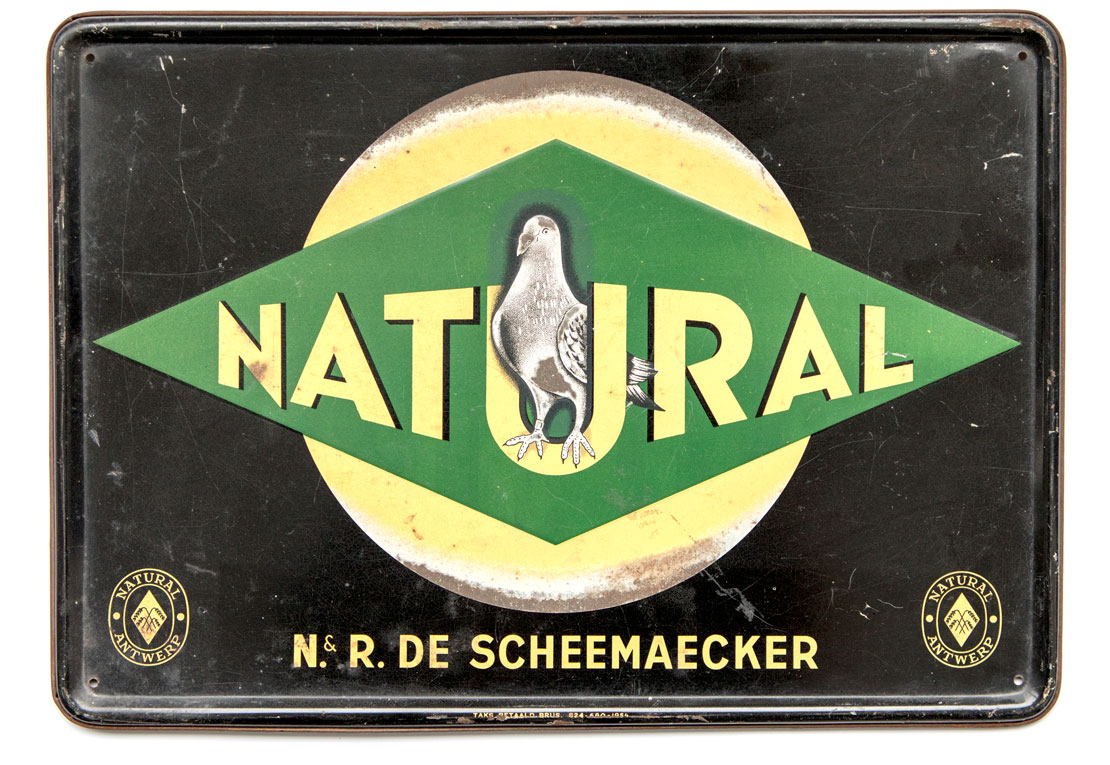
1936
Noël and Robert were both fervent pigeon fanciers and members of the club 'De Zwaluw'. The brothers learnt the tricks of the trade from Gust De Feyter, a friend and pigeon fancier. From Evrard Havenith they bought a bag of field beans of the best quality. Their interest in feeds for racing pigeons was aroused and they devoted an entire issue of their magazine to the importance of quality grain mixtures. In the meantime the brothers were playing with the idea of starting a factory for the production of pigeon feeds. Noël Descheemaecker had previously set up a law firm, but he gave up his profession to fully concentrate on his passion.
The brothers bought a piece of land and built a production site. They bought a second-hand van and in November 1936 the company Natural Grains - Descheemaecker Brothers saw the light. At that time, four mixtures were sold: one for breeding, one for racing, another for the moulting period and finally one for the winter time. In the beginning these mixtures were sold in bags of 25 kg, but to meet the demands of pigeon fanciers they switched to bags to 5 and 10 kg. The brothers themselves brought these bags to the local miller, salespeople and clubs, who in turn sold them to all the pigeon fanciers.
The company took a flying start. This success was partly due to the popularity of the magazine 'Het Duivensport'. The brothers achieved good results in the races and wrote down their experiences in articles, which other pigeon fanciers in turn could learn from. And without a doubt Noël had an extra great asset: his university education. His father insisted that he would first obtain his diploma before he could throw himself into the pigeon sport. In the last year of his training Noël was almost always absent during the lectures, because the pigeons took all of his time. When he did appear one day in one of the lessons, his teacher commented: "Well, well, if it isn’t the famous pigeon fancier honouring us with a visit!"
The saying 'Conscience taught his people how to read, Descheemaecker taught his people how to race pigeons’ became commonplace in this period.
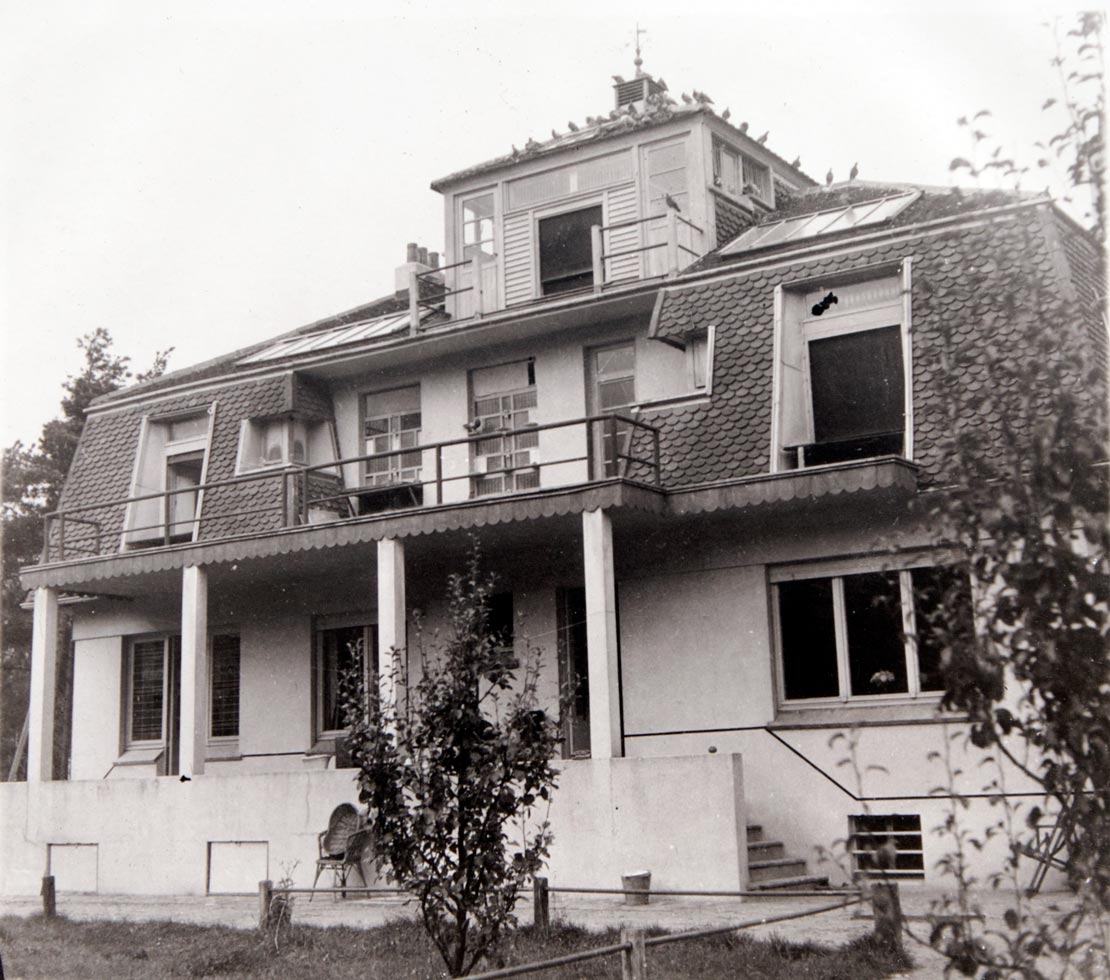
1938
In 1938 a large pigeon loft was built in the garden of Noël Descheemaecker in Schoten according to the model of the loft of the Walloon champion Georges Fabry (Liège).
1938
Noël and Robert also became well known outside of Belgium. Their name was known beyond the Belgian borders. At the end of the 1930s they were invited to countless international pigeon exhibitions, where they could share their experiences and handle pigeons.
During a pigeon exhibition in Cologne (Germany), the brothers were given the name card of a German general. The swastika on that card would later play an important role in maintaining Belgian pigeons.

1940
The beginning of the Second World War. In the countries that were occupied by the Germans, all pigeons had to be exterminated. That way they could not be used for espionage. This practice had already been applied during the French Revolution and pigeons were even considered soldiers during the First World War.
Noël and Robert were determined to make sure that their pigeons, and those of the other Belgian pigeon fanciers, did not befall a similar sad fate. They asked the German general for help whom they had met in Cologne before the war. The general, a pigeon fancier in heart and soul, devised a solution. He gave permission to move the Belgian pigeons to special pigeon lofts in Brussels, where they had to stay until the war was over. Thus there were no competition flights during the war and the pigeons were taken care of by the Belgian pigeon association. The sale of grain mixtures dried up and on top of that a V2 bomb destroyed a large part of the Natural grains factory.
Thanks to the savvy intervention of the brothers, however, Belgian pigeon fanciers could organise races again immediately after the end of the war. The Belgian pigeons had survived the war!
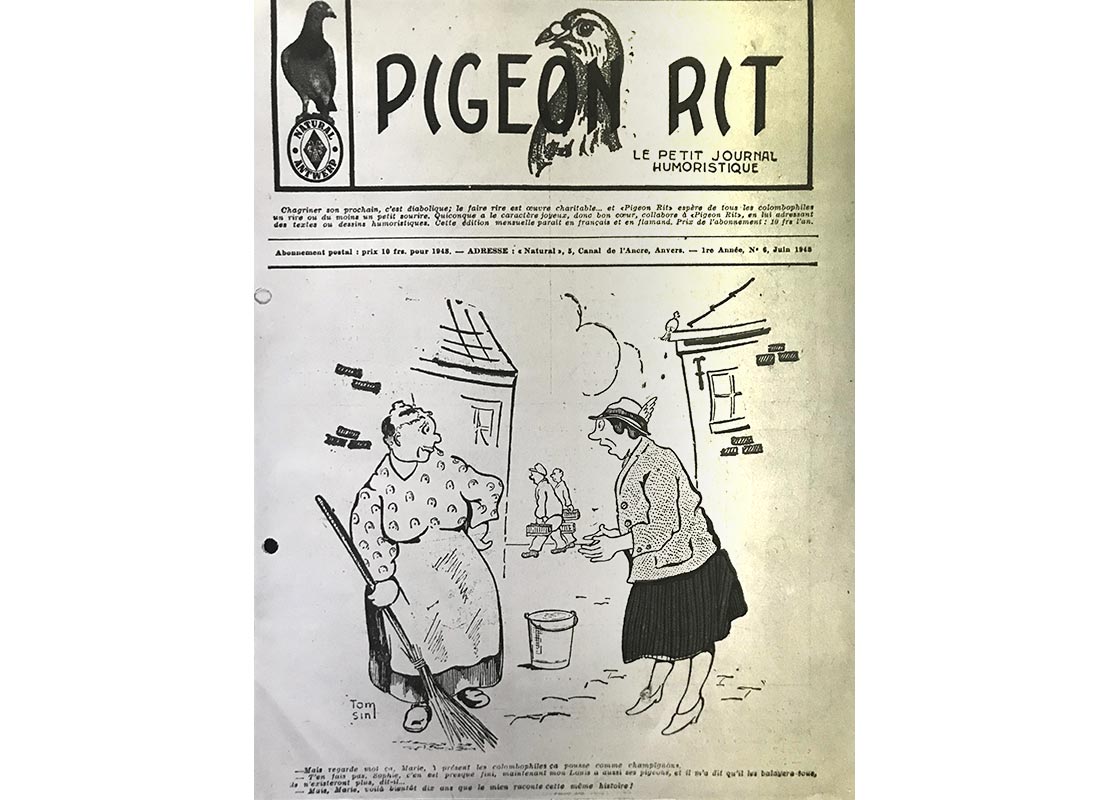
1948
Shortly after the Second World War, the pigeon sport in Belgium was as popular as ever. During the new heyday of the Belgian pigeon sport in 1948, the brothers launched a new magazine: 'Duifke Lacht' for Flanders and the Netherlands and 'Pigeon Rit' for Wallonia and France. With this light-hearted magazine, now with publicity, they wanted to promote the grain mixtures of Natural grains.
'Duifke Lacht - Pigeon Rit' appeared twice a month. Advertisements were interspersed with fun facts, jokes and comics. The magazine became increasingly popular and orders for cereals poured in. Pigeon fanciers who were not subscribers were given the additional 'Kom, Kom'. 'Kom, Kom' was an advertisement pamphlet: it contained one article about the pigeon sport and was further supplemented with advertisements for Natural grain mixtures and supplements.
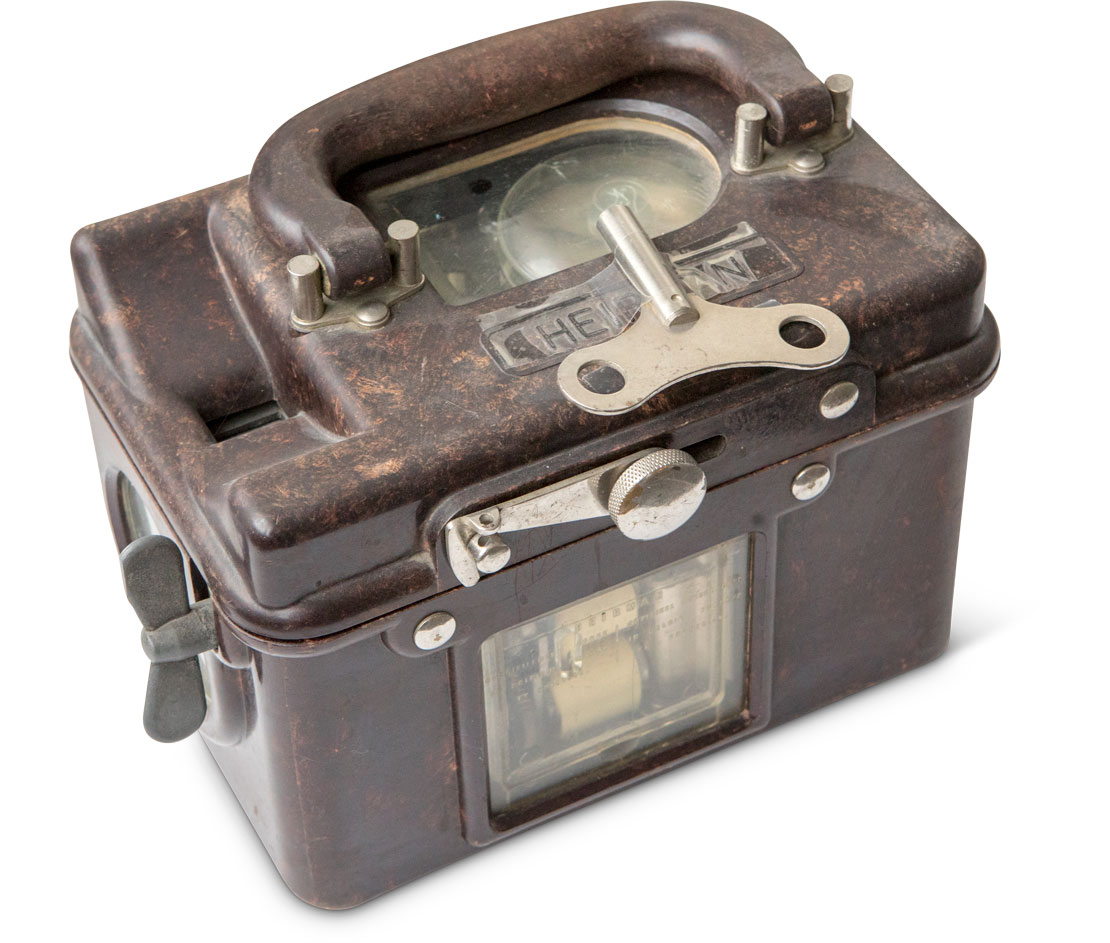
1949
In 1949 the brothers Descheemaecker introduced the Heirman race timer clock, invented by Edgard Heirman, into the market. Pigeon racing and race timer clocks (pigeon clocks) are inextricably linked. The Descheemaecker brothers quickly realized this.
During the racing season of 1949, Edgar Heirman, a well-known clockmaker, visited the club room. There he heard that some fanciers had lost a race because their clock had stopped. Edgar himself was a pigeon fancier and found it unacceptable that someone would lose a race because his clock did not work well. Then he came up with the idea to design a special pigeon clock or as he called it “a constateur” (French for “a time-determining device”). Edgar developed the 'Heirman' race timer clock, which was immediately embraced by the pigeon fanciers. He had invented a mechanism that accurately and faultlessly recorded the arrival time. The device measured only 12 by 25 cm. The brothers Descheemaecker and Edgar joined forces to produce a large number of Heirman-race timer clocks in La Chaux-de-Fonds, a Swiss city known for its watchmaking. The production was financially supported with subsidies from the Swiss government. No less than 16,000 Heirman clocks were sold. At that time, the Heirman was the Rolls-Royce among the pigeon clocks. Such a clock could, so to speak, remain in the cupboard for fifty years, and if it was subsequently wound up, it would immediately start working accurately again. The Heirman was unique among the race timer clocks. It was a fairly expensive clock, but it contained the most advanced mechanism of Swiss excellence.
1952
In 1952 the company 'Junior' was founded and the eldest son of Noël Descheemaecker, Frans Descheemaecker, came to the helm. The company commercialised a new race timer clock: the 'Junior'. No less than 300,000 copies of this revolutionary design were sold. A son of Frans later developed an electronic quartz watch. Due to the considerable competition and the fact that better electronic clocks came on the market, sales fell to 10,000 units. The company was acquired in 2008 by Linell in the United Kingdom.
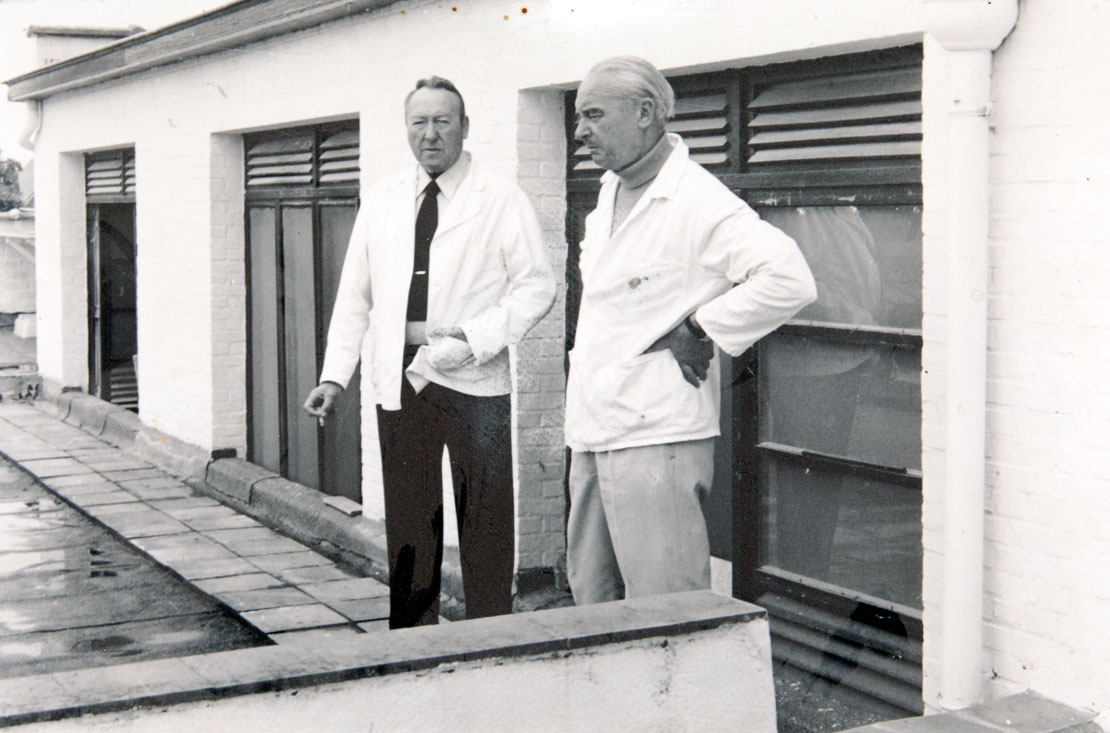
1955
The Descheemaecker brothers were now entrepreneurs in various branches of the pigeon sport: they were fervent pigeon fanciers, achieved great results with their pigeons, communicated their experiences through their qualitative magazine, sold excellent grain mixes and complementary products for the pigeons, had been active in the sale of race timer clocks, but there was still something missing in the total picture: the breeding of pigeons. That is why the breeding station in Sint-Antonius-Zoersel was put into service in 1955. The brothers brought in breeding pigeons of all known breeds with the aim to sell them to other pigeon fanciers.
Fanciers were able to obtain young pigeons from well-known breeds through the breeding station. Initially the sale of the youngsters was done in combination with the sale of grain mixtures. The customer received a voucher for every purchase of 250 kg of grain and was able to exchange that voucher for a pigeon. All pigeon fanciers were informed through the magazine 'Duifke Lacht'. The activity of breeding youngsters was a hit: additional pigeon lofts had to be installed on the breeding station to meet the demand of the enthusiastic crowd.
More and more pigeon fanciers asked if they could visit the Natural factory and the Breeding Station. That gave the brothers the idea to open the doors of the factory and the Breeding Station every Sunday for twelve weeks in a row. Pigeon clubs visited with multiple buses at the same time and made a day trip out of it.
In the morning they visited the pigeon market in Lier, then they left for the factory and in the afternoon they admired the pigeons in the Breeding Station. With a Trappist Beer in the reception area of the Breeding Station the day trip was ended in taste and beauty. Nobody raised an eyebrow when seventy or more buses were parked on Sunday. The Breeding Station has undoubtedly always been unique in the world of pigeon racing.
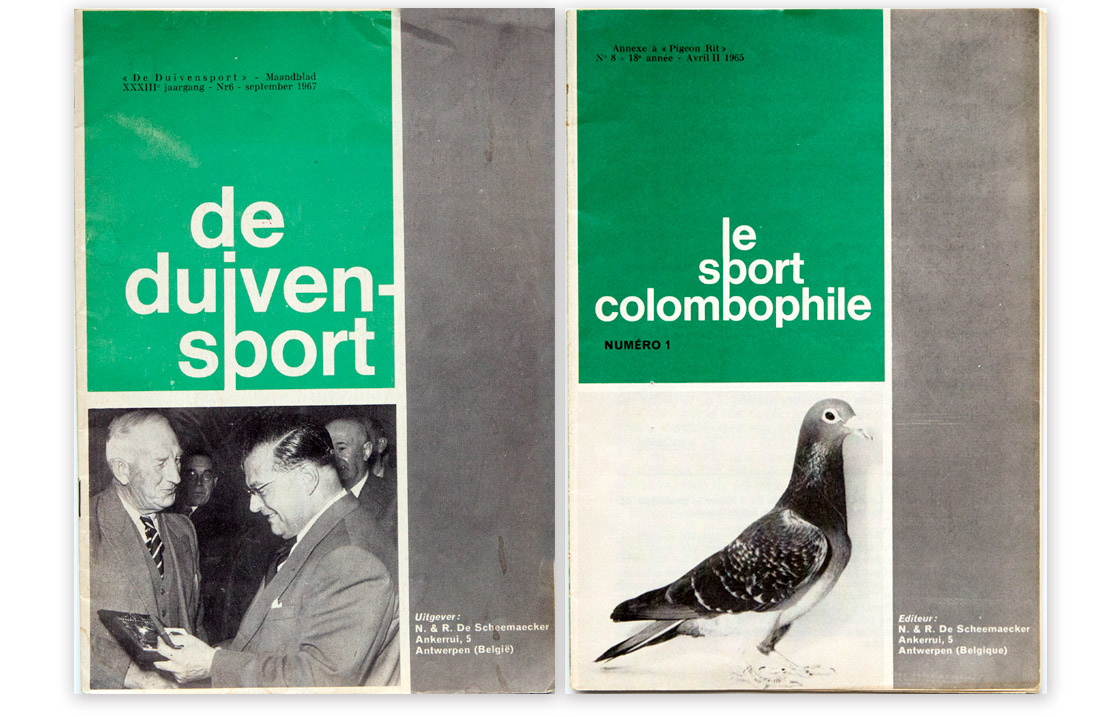
1967
Het Duivensport' was renamed 'De Duivensport' in 1967 (adapted to the new spelling) and because of its green cover it got nicknamed 'the green booklet'.
In October 1967 the two magazines, 'Het Duivensport - Le Sport Colombophile' and 'Duifke Lacht - Pigeon Rit', were merged into 'Duifke Lacht - Pigeon Rit'. 150,000 pigeon fanciers devoured this new magazine.
1970
In 1970 two sons of Noël Descheemaecker, Joseph and Noël jr., took over Natural grains. A new modern factory was built in Schoten, especially for the production of grain mixtures for pigeons. Noël remained active in pigeon racing and remained a passionate pigeon fancier until he was 92.
The Descheemaecker brothers were well-known names in the pigeon racing world in Belgium but also far beyond its borders. During the open days a lot of foreign visitors visited the Breeding Station to experience the Descheemaecker phenomenon themselves. Notably the neighbouring countries France, the Netherlands and Germany were interested in grain mixtures, complementary products and pigeons from Descheemaecker.
1981
The Descheemaecker brothers had a stand at many large pigeon exhibitions and Olympiads. In 1981 the Olympiad took place in Tokyo and the company was able to procure a place on the market in the Far East. Nevertheless, Belgium was and remains the cradle of the pigeon sport. Natural grains and the Descheemaecker brothers were known worldwide for their grain mixtures, magazines and other publications, complementary products and pigeons from the Breeding Station.
It was not long before Natural grains exported products to 55 countries and became the undisputed market leader in most of those countries.
1996
In 1996, Stephan, the son of Joseph Descheemaecker and so the third generation of Descheemaeckers, went to work in the company of his father and grandfather. In addition to all the experience that has been passed on from generation to generation, Stephan spent his last year at the university doing an internship at the pigeon feed factory in Schoten and abroad to learn the tricks of the trade.
Moreover, in that year the doors of Asia opened for the Descheemaecker family thanks to a first business trip.
1998
The first Natural store opened its doors in Shanghai (China). With its 300,000 pigeon fanciers, China is not only a gigantic potential market, but also an equally big business challenge. Together with their partner in Taiwan, vet and pigeon fancier Dr. Max Yang, Joseph and Noël jr decided to conquer the Asian market. Dr. Max Yang suggested the idea of developing a complete range of medication for racing pigeons, especially for the Asian market.
In the same year, the collection of historical pieces was also transferred to the location of the Breeding Station in Zoersel, which marked the official opening of the permanent exhibition.

2014
After almost 60 years of breeding pigeons it was also time for innovation at the Breeding Station. That is why the ELITE by Descheemaecker pigeons were introduced in 2014. These pigeons are housed in newly built and ultramodern pigeon lofts. The ELITE by Descheemaecker pigeons incorporate -among others- pigeons with pedigrees from the Janssens Brothers, Gaston Van de Wouwer, Etienne Meirlaen, Dirk Van Dijck etc. In the ELITE pigeon lofts the pigeons are handled with the greatest care, so that they will later turn out to be 'real prize winners'.
Natural grains also entered into a partnership with the AVEVE Group in 2014 to further support the growth of the family business, to develop new activities and to further invest in the product range and quality.
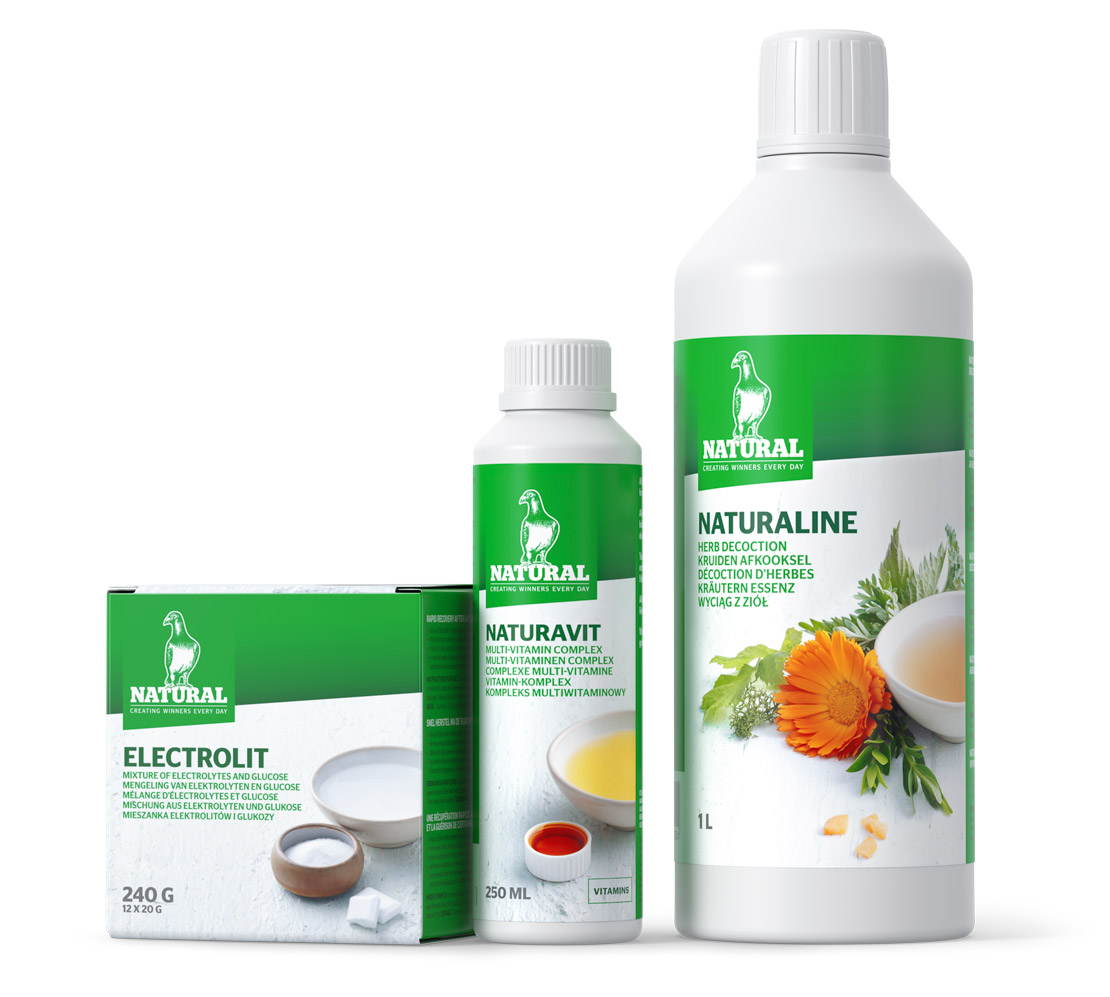
2016
In 2016, Haspeslagh, a company specialised in racing pigeon accessories and accessories for chickens, was taken over by Natural grains.
In the same year Stephan Descheemaecker opened a brand new factory in Schoten, with a hypermodern, computer-controlled production process. This ensures that the mixtures are tuned even more precisely to the needs of pigeon fanciers in Belgium and abroad.
In addition, the rebranding of the Natural grains logo started in 2016. Although a few minor adaptations had already been made since the company was founded, it was time to further modernise the well-known pigeon logo and to continue along the same lines with new packaging.
In the meantime, a breeding station was started in China for breeding ELITE pigeons. About 750 pigeons are kept there that also participate in one-loft races.

2017
With the founding of the new company and new name, a new era is dawning for the Breeding Station. Although there will still be a close connection with the pigeon feed factory Natural grains in Schoten, the Descheemaecker family will no longer run the factory from the autumn of 2017 onwards. After 80 years of producing pigeon feeds, the family saw her job as completed and passed the torch to the AVEVE Group. They had already acquired a share in Natural grains in 2014 and guarantee a successful future for the company.
Due to the separation of the activity from the production of feeds, the Breeding Station will now come to exist under the name Descheemaecker Pigeon Center. This new company was founded by Stephan Descheemaecker and emphasises again the family character, the extensive experience in, focus on and passion for pigeon racing, as well as its international character and ambitions.
Together with the breeding of the pigeons, Stephan also maintained the advertising activities in the form of the “Duifke Lacht-Pigeon Rit” magazine and the partnership in China.

2018
Three generations ago, the fascinating business life of the Descheemaecker family started in the pigeon world on the roof of a printing company. Almost a century later, Descheemaecker can still be a pioneer in this area due to recent digitization. By using social media, a renewed Duifke Lacht magazine and a new website where online orders for pigeons can be placed, Descheemaecker Pigeon Center demonstrates that pigeon sport is also accessible to young people.
In 2018, further investments were made in the ELITE by Descheemaecker by adding pigeons from well-known fanciers that have strong quality lines that fit our ELITE standard. In 2018, for example, we bought 20 pigeons from the combination Co & Piet Verbree. 22 pigeons were purchased from Freddy & Jack Vandenheede.
2019
2019 was a special year in many ways. We celebrated the 100th anniversary of the Descheemaecker Pigeon Center. After all, the history of the Descheemaecker Family started at the end of 1919 with the purchase of a number of youngsters by Noël and Robert Descheemecker on the “Vogeltjesmarkt” (Bird’s market) in Antwerp. 100 years later, we are happy to continue that passion for pigeons with the entire team of the Descheemaecker Pigeon Center.
In 2019 we also had the opportunity to purchase 2 rounds of pigeons from Antoine Degraeve. We have already bred many pigeons from the couples and thus offer an interesting line of Degraeve pigeons for our fanciers. Finally, in the 2019 racing season, our pigeon with ring number BE18-6008818 achieved a 2nd place in the PIPA ranking.

2020
At the beginning of that year we reached 10.000 followers on Facebook, a channel that we have used more and more in recent years to reach our fanciers. At the end of 2019, the renovation of the Descheemaecker Pigeon Center was started, which was festively opened in the spring of 2020, just before the outbreak of COVID. The old museum and offices were transformed into a modern exhibition space and an experience center for enthusiasts or people who would like to get acquainted with the pigeon sport. We also added new elements outside that highlight the pigeon sport, including information boards about well-known fanciers in the various lofts and the immortalization of “den 18” on the facade at the parking lot. That mural of our famous pigeon was nominated in a national comptetion where the artist Bart Smeets achieved a great 9th place.
During the Corona months, there was further focus on innovation with the virtual webinars where the pigeons were digitally shown live to the fanciers. These pigeons could subsequently be purchased by the viewers. These webinars were a great success and formed the basis for making many more videos of the pigeons that are sold. We also started our own Youtube channel.

2022
We continued to focus strongly on the digitisation and online sharing of our knowledge. In April 2022 we reached 5.000 followers on Instagram, whom we regularly inspire with news from the pigeon sport.
In that year André Roodhooft donated 22 breeding couples to the Descheemaecker Pigeon Center. André Roodhooft was the manager of the Descheemaecker Pigeon Center for many years and under his leadership the professionalisation of the Descheemaecker Pigeon Center was started.
